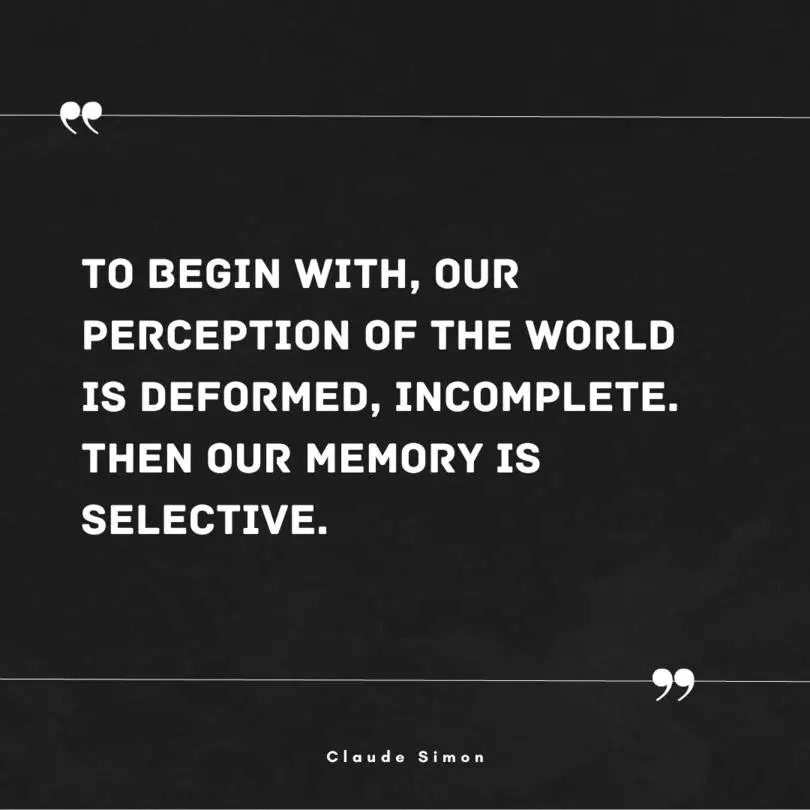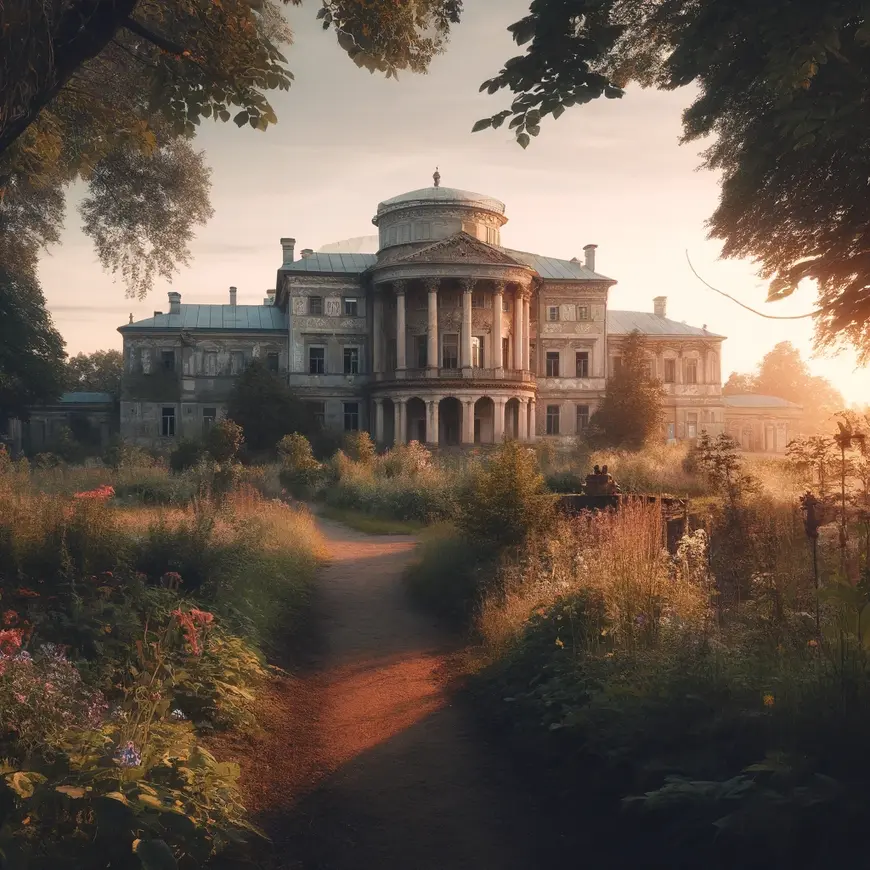An Intricate Mirage of Memory – A Review of “The Palace” by Claude Simon
In the labyrinth of memory, where past and present intertwine like vines in a dense forest, Claude Simon’s novel “The Palace” unveils a mesmerizing tale that challenges the boundaries of narrative convention. With prose as intricate as a spider’s web and a narrative structure that mirrors the unpredictable nature of remembrance, Simon invites readers on a captivating journey through the corridors of the mind. Through his lyrical narrative, he peels back the layers of time to reveal the enigmatic tapestry of human experience.
Navigating the Maze of Memory: The World of “The Palace”
Imagine a landscape where time is not linear but a pulsating current that carries memories, sensations, and emotions. “The Palace” invites readers into the world of an unnamed narrator as he revisits his childhood home – a grand palace that stands as both a physical entity and a metaphor for the palaces of memory. As the narrator’s mind meanders through the corridors of his past, Simon crafts a narrative that is as much about the act of remembering as it is about the memories themselves.
The setting of “The Palace” is as elusive as the memories it holds. Simon’s prose is a blend of vivid descriptions and fragmented recollections, creating an atmosphere that blurs the boundaries between reality and dream. The palace itself becomes a microcosm of the narrator’s mind, a space where past and present coexist in a delicate dance.

A Mosaic of Moments: Characters and Impressions
The heart of “The Palace” lies within its moments – those fleeting fragments of memory that come together to form a mosaic of human experience. The novel’s characters are not merely individuals with distinct identities; they are impressions, sensations, and emotions etched into the narrator’s consciousness.
Simon’s prose delves deep into the intricacies of sensory perception. The touch of a hand, the scent of a flower, the play of light on a surface – these details become portals through which the narrator traverses time and space. The characters, often nameless, become vessels through which the narrator’s memories flow, blurring the lines between his personal experiences and the collective human experience.
The Mirage of Time: Themes Explored
“Time present and time past / Are both perhaps present in time future,” wrote T.S. Eliot, a sentiment that resonates deeply within the narrative of “The Palace.” The novel’s exploration of time challenges traditional notions of linearity, inviting readers to contemplate the fluidity of memory and the cyclical nature of human existence.
At its core, “The Palace” delves into the enigmatic relationship between time and memory. The palace becomes a repository of moments, a space where past events remain perpetually present. The theme of memory’s unreliability echoes throughout the narrative, highlighting the selective nature of remembrance and the ways in which emotions can color our perceptions of the past.
Lyrical Complexity: Simon’s Writing Style in “The Palace”
Claude Simon’s writing style is a labyrinth of words and images, an intricate dance between stream of consciousness and fragmented narration. His prose is as much about the spaces between words as the words themselves, creating a sensory experience that mirrors the act of remembering.
The novel’s structure mimics the unpredictable workings of memory. Sentences flow seamlessly from one to the next, evoking the meandering currents of thought. Simon’s descriptions are rich and immersive, often verging on the poetic, as he captures the essence of sensory experiences and the emotions they evoke.

Famous Quotes from “The Palace” by Claude Simon
- “Memory is no longer a solid surface, but rather a liquid mass, like the clouds, changing constantly, drifting, altering in density, color, and shape.”
- Explanation: This quote illustrates Simon’s perception of memory as fluid and ever-changing, rather than static. It emphasizes the idea that our recollections are mutable and can be reshaped by time and perspective.
- “Words are just the surface of things, the visible skin that hides the true essence beneath.”
- Explanation: This quote reflects on the limitations of language. Simon suggests that words can only capture a superficial layer of reality, implying that deeper truths lie beneath what we can articulate.
- “The past is never dead; it is not even past.”
- Explanation: This quote highlights the enduring presence of the past in the present. Simon’s work often explores how historical events continue to influence and shape current realities, echoing Faulkner’s famous line about the omnipresence of history.
- “In the end, everything is a story, even the things we believe are most real and true.”
- Explanation: Simon emphasizes the narrative nature of human experience. This quote suggests that our understanding of reality is constructed through stories we tell ourselves, blurring the line between fact and fiction.
- “War is a monstrous madness, a wrecking ball that obliterates not just buildings but the very fabric of society.”
- Explanation: Reflecting on the impact of war, this quote underscores its destructive power. Simon, who often wrote about the effects of conflict, portrays war as a force that devastates both physical structures and social cohesion.
Trivia Facts about “The Palace”
- Publication Year: “The Palace” (“Le Palace”) was first published in 1962. It is one of Claude Simon’s notable works that contributed to his reputation as a significant figure in modern French literature.
- Nobel Prize Influence: Claude Simon won the Nobel Prize in Literature in 1985. While “The Palace” is not the sole reason for his win, it is part of the body of work that showcased his innovative narrative techniques and deep exploration of human consciousness and history.
- Historical Context: The novel is set during the Spanish Civil War, specifically in Barcelona. It explores the chaos, ideological conflicts, and human suffering during this tumultuous period, reflecting Simon’s interest in historical events and their impact on individuals.
- Narrative Style: “The Palace” is known for its complex narrative structure, including stream-of-consciousness writing, fragmented chronology, and shifting perspectives. This style is characteristic of Simon’s work and aligns with the French nouveau roman (new novel) movement.
- Themes: The novel delves into themes such as the brutality of war, the fluidity of memory, and the search for meaning in a chaotic world. Simon’s detailed descriptions and introspective prose invite readers to ponder the nature of reality and human existence.
The Mirage of Reality: Relevance Today
While “The Palace” is a product of its time, its exploration of memory, time, and human experience remains relevant today. In an era dominated by constant connectivity and digital archives, Simon’s narrative invites readers to reflect on the nature of memory itself. The palace becomes a metaphor for the inner landscapes we construct, the memories we choose to preserve, and the moments that shape our identities.
In a world where the past is often reduced to pixels on a screen, “The Palace” challenges us to consider the depth and complexity of our own memories. The novel’s emphasis on sensory perception and the emotions tied to each moment encourages readers to engage with the world on a more visceral level, savoring the details that form the tapestry of their lives.
Final Thoughts on “The Palace”: A Mirage of Memory’s Mirage
Claude Simon’s “The Palace” is a masterpiece that defies conventional storytelling, inviting readers to navigate the intricate corridors of memory and time. Through his labyrinthine prose, Simon captures the essence of human experience – the way moments, emotions, and sensations interweave to create a mosaic of remembrance.
The palace becomes a metaphor for the fragile nature of memory, a space where the past is both preserved and distorted. Simon’s exploration of sensory perception and the mirage of reality serves as a reminder that the act of remembering is an art in itself, a process that shapes our understanding of the world and our place within it.
” The Palace” invites readers to embrace the complexity of memory, to peer beyond the surface of events, and to immerse themselves in the lyrical currents of the human mind. It’s a narrative that challenges us to navigate the labyrinth of our own experiences, to embrace the fluidity of time, and to appreciate the enigmatic beauty of the moments that shape our lives.
More Reviews of Works by Claude Simon
“The Flanders Road” by Claude Simon: A Mesmerizing Exploration of Memory and Perception What I learned from The Flanders Road…
A Mesmerizing Labyrinth of Perception – A Review of Claude Simon’s “Blind Orion” Simon’s Enigmatic Masterpiece – Navigating the Depths…

